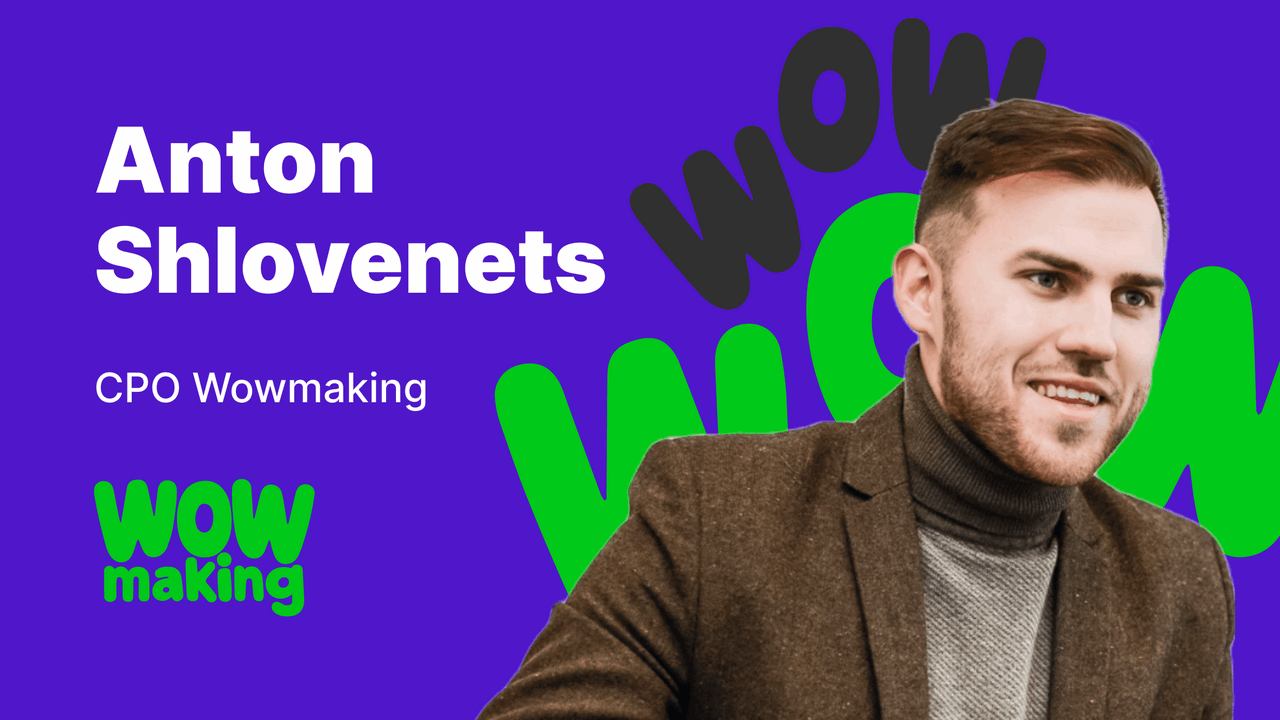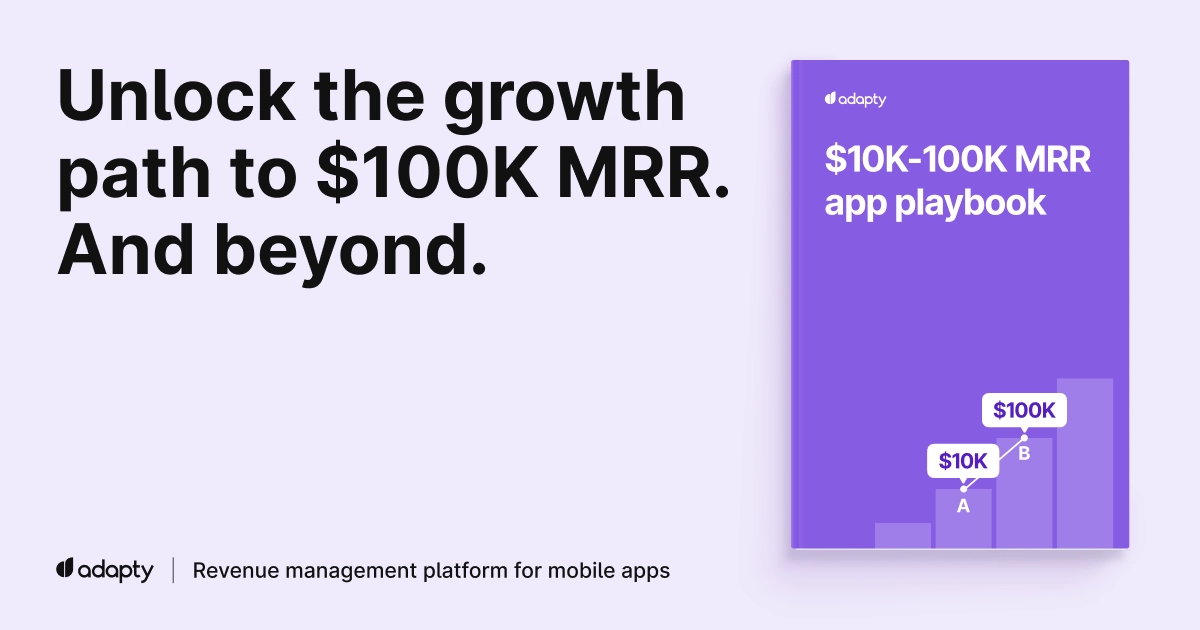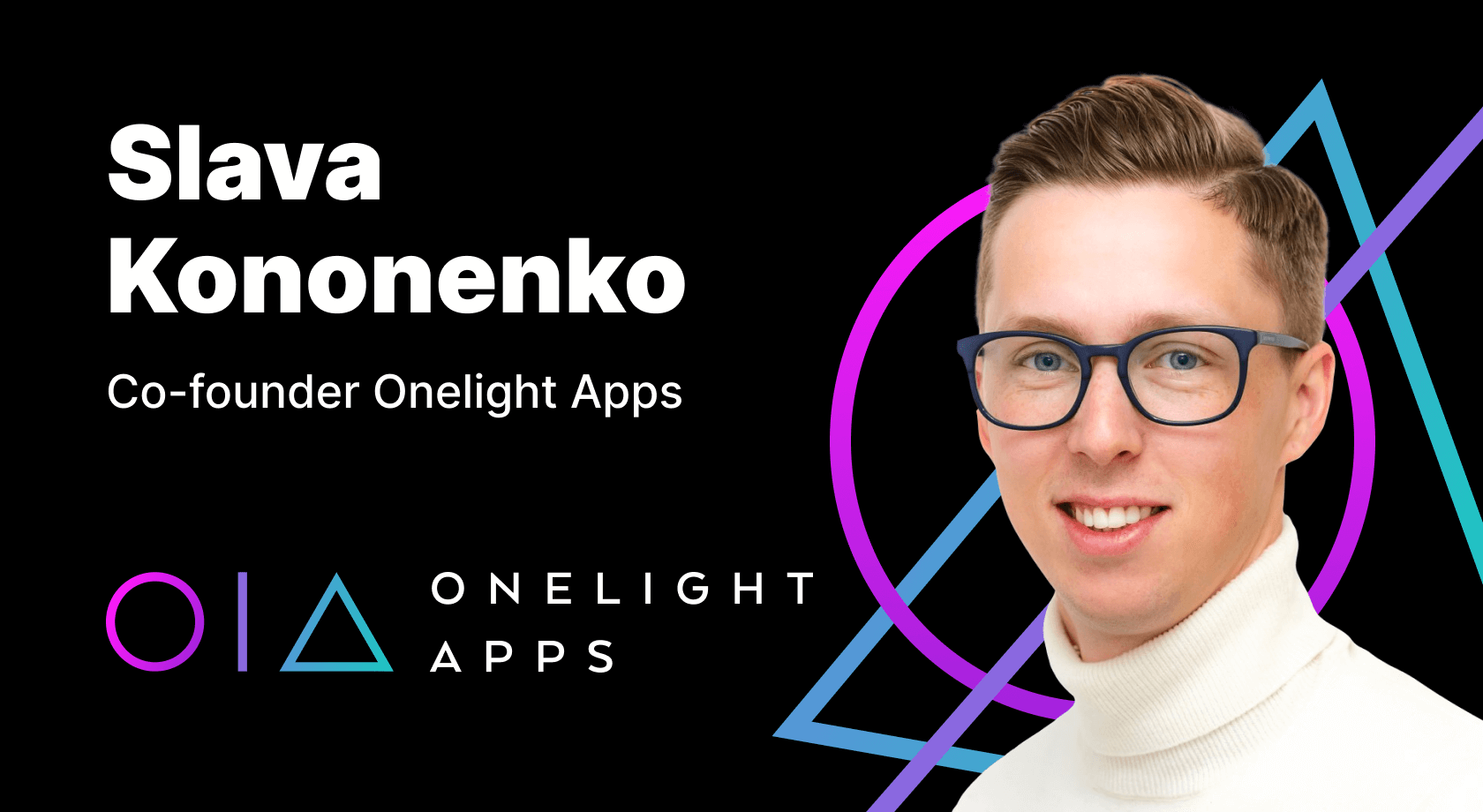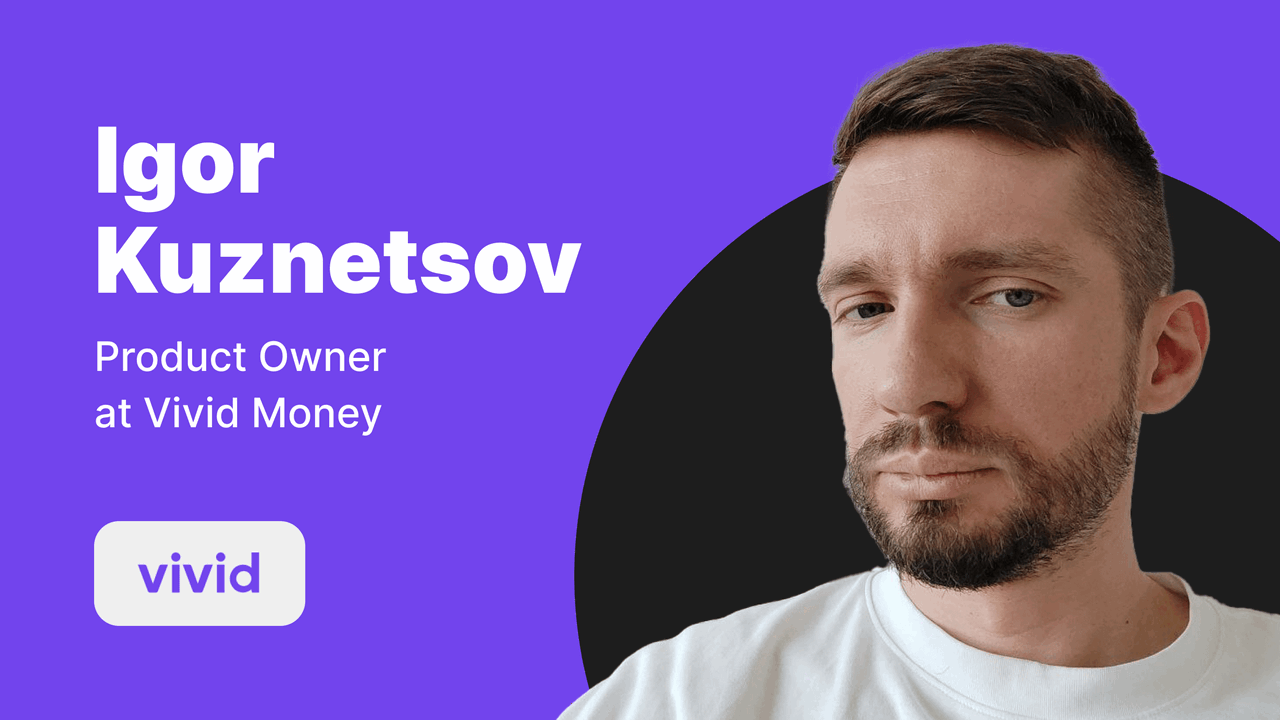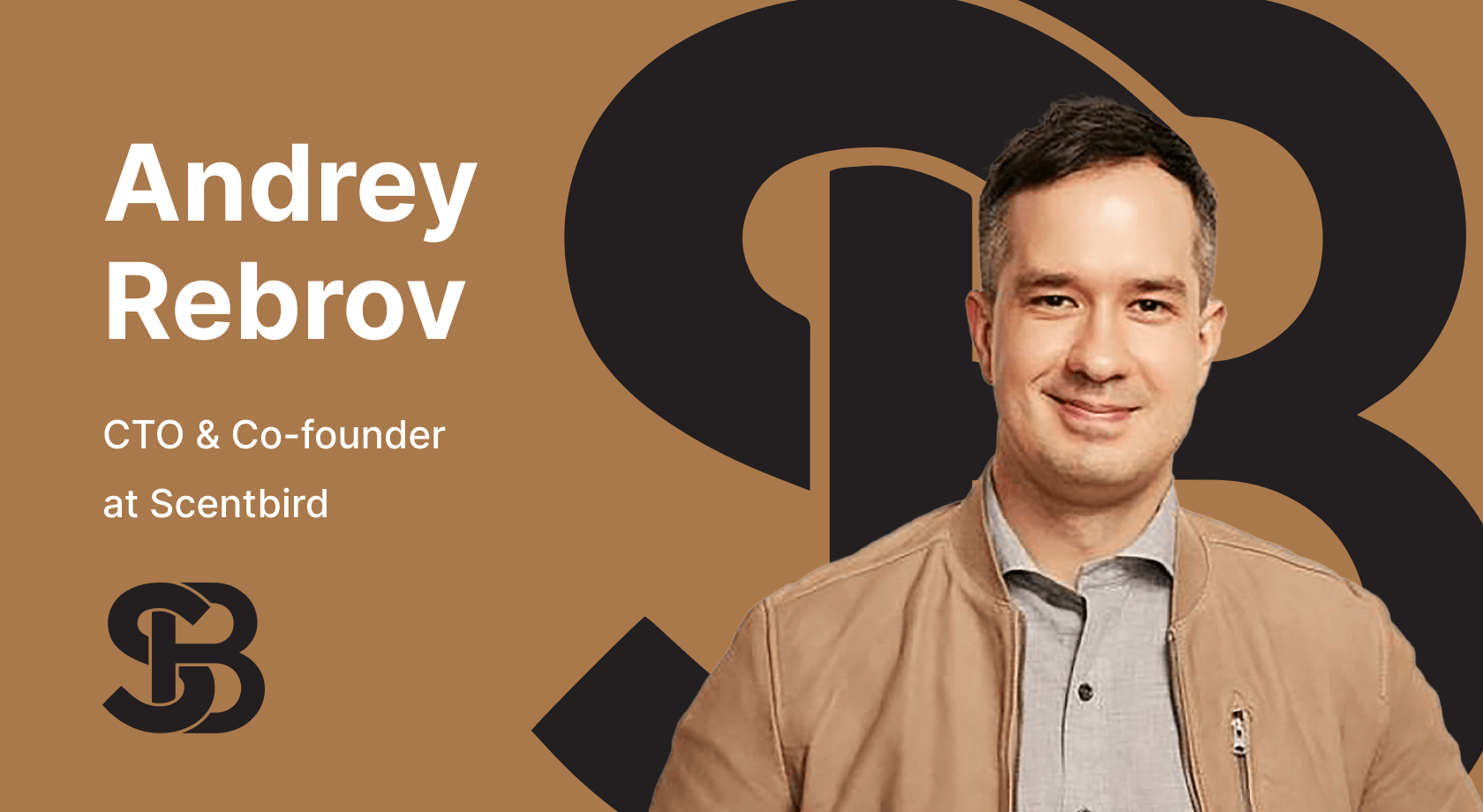Many developers seem to earn less money, as they don’t know how to properly purchase traffic or calculate ARPU. So we’ll try to help them out!
In the 15th episode of the SubHub podcast, we talk to Anton Shlovenets, the CPO of the company. He told us about the right approach in traffic acquisition, effective work with ad creatives and important aspects of calculating unit economics in the right way.
Listen to the episode in Russian or read the most interesting parts below in English.
Intro
Anton Shlovenets: Sometimes you feel really proud of giving something new to the market, especially in terms of creatives. For example, when our creative team finds some kind of unique concept which was never used on the market before, and then you see the same creatives slowly start to appear in the apps of the big players like Calm, and you know they replicated your work, – it’s awesome. This doesn’t give you money though, but it can soothe your vanity.
Meeting the guest
Interviewer: Hi, Anton, thanks for joining us on our podcast! We’re very glad to see you. Tell us a little about yourself, your professional way, and how you got to the CPO position at Wowmaking. We’re all eager to learn about it.
Anton Shlovenets: My path was thorny and difficult. I started not in the mobile sphere at all and wasn’t working with Apps. I worked with web and general clients in digital marketing, advertising household items. Our agency was a partner of Google, so we participated in their conferences, and it’s where we met the guys who were into making mobile products, it was many years ago. We worked with all kinds of clients, so we offered them our services as well and started testing how we can help them in terms of marketing.
At the same time we had another company that was engaged in outsourcing, but it was beginning to decline at the time. So we decided to turn these teams to developing our own products, including mobile apps and web services. It didn’t work out very well, but they learned at least some technical aspects of development. But in the process of testing our own products we met some other guys who had just made their first iOS app and they offered us to work on the RevShare model. They saw that we had expertise in marketing and asked if we could help them with the traffic acquisition, and offered to share the profit 50/50.
So we started working on that, purchasing traffic and stuff. It was 5-6 years ago, everything with iOS was different back then. Money came in fast, we earned first $10,000-20,000 dollars by simply purchasing traffic for a month for the partners’ product. At the same time, my partners and I agreed to try to make a clone of their app. Then we started looking for other niches and slowly began to grow. In the end, we came to the point where we decided to open a separate company for this.
How Wowmaking works: inhouse products and traffic acquisition
Interviewer: Tell us a little bit about the numbers. What is Wowmaking, what does it do?
Anton Shlovenets: Wowmaking has 85 staff members. It’s a company that’s a resident of the Belarus Hi Tech Park. Our monthly turnover is $1,500,000 from all the mobile products we make.
Interviewer: What was it like six years ago? When you met the guys and they offered to do the publishing and share the revenue, did they just say, “Hey, we have a product.” and you said: “Hey, we have the money and know a thing or two about marketing.”? How does this magic and partnership work?
Anton Shlovenets: The magic and partnership happen within the areas of responsibility where one knows one thing better, and the other does better something else. They had a product, but they didn’t know how to work with traffic, and also had a limited amount of money for marketing. We had traffic, knew how to work with Google, Facebook, etc., meaning we could afford to acquire a lot of traffic. They were small, just three developers. And we were an agency with a staff of 50, and we had clients, turnover, etc. We had working money, marketing expertise, ad cabinets, and minimal experience in mobile. And they had the product, they knew how to make products, they knew how to work with the AppStore, they knew how to get revenue, and that’s where the match happened. There was some competence with us, and some competence with them. It was sort of a business opportunity, we were taking a risk, but we decided to try it anyway.
With our first iteration, we realized pretty quickly that we were doing okay. Because back then there was no usual analytics, nothing like that. You acquired the traffic, and then you waited for the result. And that was it. There was a mix of minimal accumulated experience in UA and traffic, in creatives with their product, the niche that could get a good return on investment. And the match happened, everything took off. It didn’t bring super results, we didn’t make a million right away, that’s not the kind of numbers we’re talking about. But we made our first $10,000-20,000.
Interviewer: Did you have any side investments in your business?
Anton Shlovenets: Yes, we had investments from our agency throughout the whole story. But it’s a common thing, to go to the mobile market and use money from other businesses to get started.
Interviewer: Six years have passed, the market has changed a lot, the number of apps there has increased many times. What kind of product were you working with? Now it’s really hard to find a specific niche for an app.
Anton Shlovenets: It was a horoscope app and, in fact, this niche is still alive today. We have our own products in this area at the current time, and we still work with them, even though it’s been six years. We just call them “everlasting” products. Food is everlasting, as people will always eat and people will always read horoscopes as well. It’s timeless.
And as for finding a niche or a product – if you know how to look and what to look at, it’s not hard to find a niche at the moment. I can explain by telling what our business model is and how we work. Several years ago, we would do what most people did – opened up Sensor Tower, looked at the apps’ revenue, found a growing one, decided to do the same app and make a million on it. Everybody was thinking that way, and a lot of people still do. But it may not be easy to find the right marketing approach to the application you choose, and you’ll just waste money and leave it to die. We have many of our own examples of this.
But now we make our own in-house products. We buy our own traffic and make money on these products. The key thing that comes first and most important to us is how much traffic we’ll need to purchase and how we’ll be using it. So we assess in advance the traffic, the creatives, and if we understand that we can purchase traffic in this niche at an adequate price, then we decide to work on it. And only after that we try to understand if we can make such an app, its tech aspects, content, etc.
We purchase traffic before we make the app itself. We purchase it for our own apps on iOS and Android, where we generate the onboardings precisely for the new niche, create new paywalls and test everything on real data. All other ways to test that you can think of won’t give you true vision if you work with performance marketing and CPA. Purchasing traffic for clicks, on a web page through Facebook, is not the same as purchasing the traffic for installs, these are two completely different aspects.
The main metric for traffic acquisition
Interviewer: Can you give us some kind of benchmark? What numbers or metrics should people focus on when purchasing traffic?
Anton Shlovenets: There’s only one metric – CPA. Just for example, let’s say you have an Android app with integrated billing. Then you do the minimum: come up with the right onboarding for your niche, make universal screenshots in the store, make creatives that you consider necessary, or take some ready-made creatives from the market. Take $1,000, run a CPA campaign on this money. Quickly purchase the traffic from Tier 1 and Tier 2: $500 each. And then look at the CPA. That’s all.
In Tier 1 countries, we benchmark ourselves on Android up to $15 for a trial, in Tier 2 – up to $10 for a trial. If we get such figures and if there’s volume, then this niche is well purchasable. But it takes more than one creative to test it. Sometimes you can simply come up with wrong creatives, so you just need to give yourself two or three more chances to iterate if you strongly believe in this niche.
If the CPA is not $15, but $20, for example, then we most often don’t go any further. We just have a lot of examples that prove that it’s not worth it. But if we just talk about an individual who just wants to make an application on their own, then it may be worth a try. Because you can optimize the page in the store, come up with better onboarding, improve the flow, etc.
Here we also have a classic problem: more budget, higher CPA, lower ROMI. You invest $1,000, and get $10 CPA, but if you deposit a million, you’ll never have the CPA at $10, It will most likely be $20. And ROMI will then be lower as well. But still, with a bigger growth, you can get more margin in total. The growth will happen, but it will be x1.5, x2, not higher. And you shouldn’t forget to work on the whole funnel as well.
How to find the best creatives
Anton Shlovenets: Another important part is creatives. Creatives can simply die out and get useless. You need to search for new concepts over and over, this should be taken into account as well. The market works in such a way that you can make a creative and tomorrow your concept will simply be used by others. So everyone in your niche will have the same concept.
Sometimes you feel really proud of giving something new to the market, especially in terms of creatives. For example, when our creative team finds some kind of unique concept which was never used on the market before, and then you see the same creatives slowly start to appear in the apps of the big players like Calm, and you know they replicated your work, – it’s awesome. This doesn’t give you money though, but it can soothe your vanity.
Regarding the production of creatives, we somehow try to automate or template some things that we do a hundred times. We have templates for all sorts of things. There are special services that offer you automation in working with creatives, but they’re not that good yet. In the end, a lot depends on working with footage. You may find some stock footage, but it may not fit, be of different angle, color scheme, etc. That’s why we still have motion designers who animate and assemble videos, as well as the designers who draw creative components in the form of pictures, objects, etc. Then it’s all put into a template, which is quickly assembled, in an hour and a half or two. And as a result, one motion produces three or four videos. It’s not like it used to be, when we had to animate everything for three days.
Why is it better to test on Android and how to build an MVP
Interviewer: You said you test on Android. Why so?
Anton Shlovenets: Because Google is more tolerant in terms of policies. On iOS, it would be more difficult, because the app would simply be deleted in a couple of weeks for being misleading and all other sorts of violations.
Interviewer: Okay, and what do you do after your test is successful? When do you start working on the product itself?
Anton Shlovenets: After the test results with the traffic are successful, we start working on the application. First of all, there must be someone who wants to do it, otherwise it won’t work out. So we find someone who is interested in the niche or the theme and they start making an MVP. We have a deadline of 2 to 3 weeks for MVP. It should include templates, onboarding and subscription pages that have already been moved to the framework, i.e. we just need to change the colors and design. Everything is added quickly. We also need to make a core feature around which the product will be built, at least in the MVP format. You don’t want to submit an empty app for the review.
So after 2-3 weeks the MVP for iOS and Android are done and we start working on the second iteration, improving the app. After about a month we get a fully functional MVP with all the planned features. And during this period, from the first iteration to the final MVP, we once again test the CPA, to make sure the figures with the real product are more or less the same as they were in the “dummy” test. If the figures are 10-20% higher, we still go on and upgrade the app further, focusing on the core feature and the flow, to add more value. But if the CPA is significantly higher, we simply shut down the project, it’s no use going further. The reason for real CPA getting higher is primarily iOS: we initially test everything on Android, so we just accept the fact that CPA is usually a bit higher on iOS. Plus, there may be some bugs on the Facebook side and the ads may not show up correctly, so you’d have to fix everything and relaunch.
Interviewer: Who’s responsible for the pre-MVP stage? Who decides to make the dummy tests and comes up with the initial ideas?
Anton Shlovenets: First of all, you need to find a niche. It’s a constant research in which one particular person in our company is involved. He studies Sensor Tower, checks newsletters and startup news, follows the market, and finds interesting ideas. Then we just pick the most interesting ones.
I usually divide the niches into two types. The first one is something unique that you come up with yourself, where you need to make your own creatives. And sometimes there are products that are not very popular in the store, but they seem interesting to us, like some quickly growing app that earns $200-300k per month. In this case we usually take the competitors creatives and test everything as fast as possible. It’s not really right to take the competitors creatives “as is” and test them, but it’s the quickest and easiest way, and it matters a lot in this business.
How to find the right niche by acknowledging your weak points
Interviewer: Which categories in the store do you find interesting, and which ones are generally bad for business and should be avoided?
Anton Shlovenets: It’s a pretty personal question, meaning that a lot here depends on your personal preferences, abilities and knowledge. For example, I think the Utilities category is really interesting, as it provides huge value to the users, but we never learnt how to properly work with them, so we don’t. I can also say that Health&Fitness is not my cup of tea, as it requires huge amounts of content, and it’s not the strongest side of our team. So we don’t go there either. So it’s always best to choose the categories and niches where you, or your partners, already have certain expertise.
Sometimes you may find an app that has a revenue of $500,000 and it may lure you into making the same app, as in general, everything seems pretty clear about it. So you take the same creatives, the same onboarding, and so on, but it doesn’t work out at all, because you don’t know for sure the channels this app uses. So the advice here is to know your competence, as well as your weak points, and build everything around it.
How cohorts help calculate ROI
Interviewer: At some point, in the process of making the MVP, you’re sure to start thinking of how much you can earn in the future from this app. How do you calculate this?
Anton Shlovenets: We never set an exact figure on how much we’ll earn, we just go step by step. Our first task, when the MVP is out, is to reach the self-sufficiency of the team that made it. And it’s important to point out how we calculate self-sufficiency, because many still don’t know how to do it. We use cohorts. We usually take a cohort of the month, and purchase traffic for this month to this product. Then we see from the predictions, from our internal analytics, that this cohort will bring us X money in a year. It will pay back marketing costs and give us some more. Let’s say it will be 20% ROI. Any formula can be used here, they are all the same anyway.
And we see that 20% of the ROI on this money that we spent, which is, for example, $50,000 – is $10,000 in a year. We paid off the marketing, as we have $10,000 revenue. But we have the cost of the team: taxes, office, etc. And in total it turns out that the team costs $20,000 or $25,000. And our task is, by gradual updates for a certain limited period that we give this team, to reach the break-even point in order to show that we can invest money steadily, every month, so that potentially in a year it will reach so much profit that this team will pay off its costs.
The second task, after we’ve reached the point of self-sufficiency, is to start making money. For this we may start boosting the team, by adding more people, increasing OPEX, and so on. But it’s usually discussed and decided individually with the product owner of the team.
How to correctly calculate the unit economics
Interviewer: Do you somehow predict the LTV? You probably do, but how much do you believe in it and how important is it for you?
Anton Shlovenets: Let’s start with talking about how to calculate the unit economy in general, because the LTV predictor is an important part of the unit economy of a mobile non-gaming subscription product. We are talking purely about subscriptions and about apps, not games, just to simplify.
The first point here is that many still don’t know how to correctly understand cohorts. Some people are still watching the net revenue for a month and don’t understand how it will work out. Or even better, let’s say they need to see the ARPU or ARPPU for May. The right way here would be to take this month’s cohort and look at these metrics on the 90th day. That would include May, June, July, and August, and then on September 1st you’ll see that ARPU equals $1, for example. But instead, they simply take the period from May to August and see that ARPU is $0.7. But in this case, the August cohort hasn’t yet brought the money it should bring. It’s some ABC explanation, but many don’t understand this, and I’m sure they will be earning much more if they eventually do.
The second point is to understand what LTV is exactly. In my opinion, LTV should be calculated based on how and what you spend on attracting users. In the hyper-casual segment, we take a cohort and the income which these users have brought over a certain period of time. And we settle on income per user, that is, per install. Let’s call it ARPU for N day. There is ARPU, and there is ARPU for N day. And there is ARPU LTV, it’s the same thing, but just the point where they stopped bringing money and the cohort is completely gone. If we have ARPU, then we go with CPI for installs. And then we can reduce the economy. Our ARPU should be higher than CPI.
You should also bear in mind that there are different types of subscription products: trials, no-trials, etc. All these categories should be taken into account when counting LTV. If you count only those who paid after the trial, ignoring those who churned after the trial, you’re sure to get a higher LTV, but it’s far from the truth.
It’s necessary when evaluating the metrics to take into account the way in which you attract the user. If they are attracted through installs, see ARPU, If through trials – see CPA for trials. So you need to have one separate income per trial user. And if you have mixed monetization – trials plus paid – then you need to have the income per a trial user and a paid one. You’ll get a certain metric like ARPPU for trials, and ARPPU for paid users, which are separate products. And the total will be another figure. And this is a really important thing. Because how can you purchase, and understand how you can purchase, if you look at the LTV of the paying person, but trying to attract CPA through trials. I call through this podcast to count correctly and build the unit economy correctly.
Therefore, we have an internal metric, which we called ARPAS (average revenue per active subscription). Active means that it’s activated. Taking a trial is already an activation: user activated the trial, means they activated the subscription. Anyone who activated a subscription in any way – either by taking a trial, or by taking it without a trial (for example, without a trial it costs 9.99 per month) – this is all an activation. So we look at the money that these users brought after the completion of the trial activation period or immediately as soon as they were deducted from them.
Let’s say we have two products for onboarding: $9.99 per month with 3 days of trial, and a yearly subscription of $29.99 without a trial. So we got a cohort of users. 50% purchased one option, 50% the other. Then at the moment of day zero, when we purchased users, our ARPAS will consist only of the paid users, because real money only came from them. And in three days, there will be added those who came from the after trial purchases. We also subtract the store commission and get a clean final figure. And then we can use this figure to understand what CPA should be. We see that on some N day we have ARPAS or ARPPU of $15, which means that we can attract CPA on hybrid monetization for this GEO, for this source at $15 and below. The lower it is, the more delta I’ll have left. This will make up my ROMI or POI.
This is a fundamental thing, as it shows how much these subscriptions will bring during their lifetime. So when building our predictions by subscriptions, this allowed us to understand that on some N day we would receive some amount of money and we can afford some kind of CPA. It helped us not limit ourselves within the framework of some of our metrics. We allowed ourselves to scale a little more and even purchase at a little more expensive price, knowing that we’re sure to earn a certain amount of money.
Based on this metric, over a long period of time, we managed to come up with more or less accurate predictions. We predict the subscription curve based on the historical data. And only thanks to the fact that we made these predictions many years ago and we are still making them, refining them, etc., we have grown apps using our own money, without investments. We could go and get loans from a bank, realizing that our ROMI will be higher than the rate at the bank (we will earn more). We knew that ROMI would bring some money, we knew that we’d give this money back. And that’s all, we just needed money for traffic. We took loans, earned the money, paid the banks back and had some money as revenue. And we still work this way.
Conclusion and key points
Interviewer: Let’s sum it up on what advice we can give to those who have listened to us.
- Know your strengths and know your weaknesses. And find those who will cover these weaknesses for you.
- Calculate the unit economy correctly, so that you understand how much you get according to the metric, based on the way you attract users. So that you understand how much you earn from a trial, if you attract trials, and don’t come up with some potentially large numbers that don’t show the real picture.
- Build your predictions correctly, calculate them, and you’ll be able to earn more. You can invest more, understanding how much you will eventually earn in a year.
- And most importantly, you need to honestly and objectively look at the quality of the numbers. But this is difficult.
Anton Shlovenets: And I would also add that you shouldn’t focus too much on the so-called “vanity metrics”. These are metrics that we usually look at to see how well our business performs, like revenue or installs. We keep looking at them over and over and stay happy when we see them grow from day to day. But you should also look at the negatives, at the metrics that grow slowly or even show problems. If you find the ways to fix and improve them, you’ll grow even bigger.
